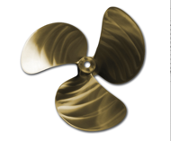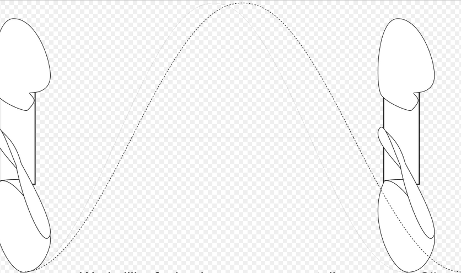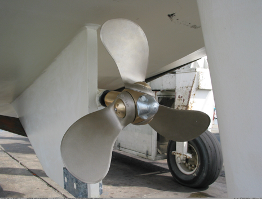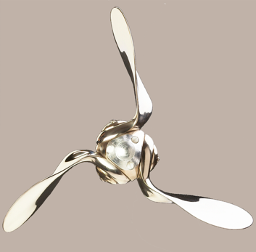Most sailors love the propeller under their ship, because it is so beautifully shaped, the bronze thing with its blades, specially made for the job. Do you have any idea what the efficiency of the propellor under a yacht is?? I always thought it would be like 80%. Till I saw that Dick Koopmans, a well respected and seasoned yacht designer, has the rule of thumb to estimate 50%. That means: 50 % loss of all the energy the engine delivers.

Designed for the fastest speed only
You know why? Because the propeller designers have to design the propeller for only one speed, the fastest. It means that the blades of the propeller are fixed to that pitch.

You can make the propeller for slower speeds, but the problem is that you can not run it faster. It would not only be very inefficient, but with too many rotations the prop damages itself. It is called cavitation.
The cavitation problem
This is the following process. When a prop runs through the water, it creates the desired underpressure on the thrust side (the side where the ship is heading to). So the prop will go forward. But when the prop runs faster than designed, the prop creates sometimes that much underpressure that bits of water evaporate. These tiny bubbles stick to the prop and a fraction of a second later they implode, with that much force that it leave a little hole, a little dimple in the bronze. It happens most frequently on the outside of the blade, the most effective part. The prop’s surface loses its smoothness and that gives resistance, and the chance on even more cavitation.
So that’s why a prop is made for its highest speed. To prevent damage.
We hardly ever motor on maximum speed, so then it is getting inefficient. The so-called ‘pitch’ is too small. Your prop is like a sail that is too flat for the job to be done. It doesnot hurt, but it doesnot make the speed.
the solution: the variable propeller
But, there is a solution! That is the variable propeller. The blades can adjust . They were invented in 1924, and although expensive, they were widely used on ships with variable speed. You had to adjust the most efficient pitch yourself.
Some years ago, they invented the propellor that can automatically adjust its best pitch. Ideal for leisure sailors. They tested it and even on a high speed, the variable prop is doing 10 to 15% better. On low speeds it will be more and more.


The prop costs more than the regular one, but it is something to think about, with the ever increasing diesel price.
Extra: no prop works well if you use it in reverse, to go backwards. But the variable prop adjusts itself to it and is just as efficient in reverse.
Therefore, the Autoprop is also a great prop to regenerate electricity in case you have an hydro alternator, or a propshaft alternator. So you can even get energy with it.
